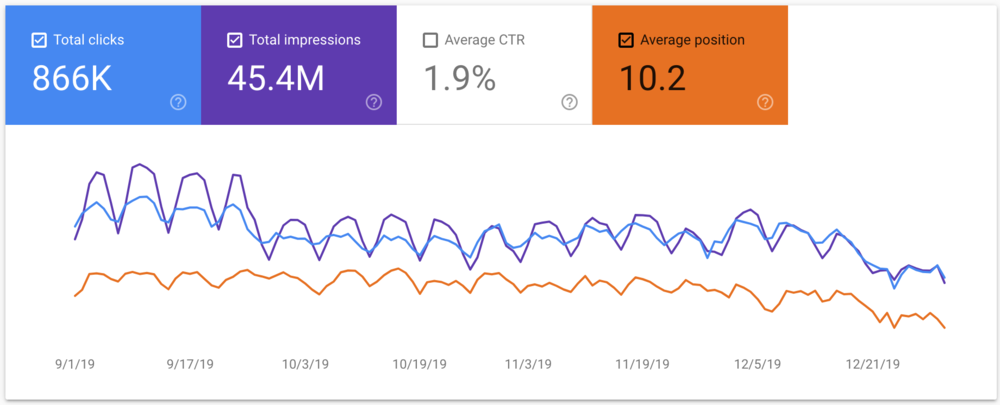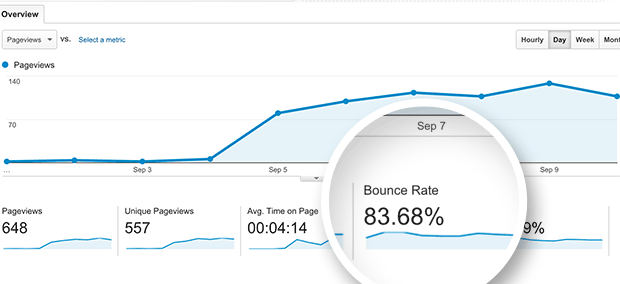When should you redesign your website?
Here is a guide to help remove the guesswork out of the equation because, let’s face it, a website redesign is not something to look forward to.
As they say, if it is working, don’t touch it.
This makes so much sense.
When it stops working, it is time for a makeover.
But, when exactly is that?
Here are some signs to know when it is time.
- Your site is not mobile-friendly
Did you know that mobile accounts for more than half of the entire internet traffic?
This doesn’t come as a surprise considering that there are at least 5.22 billion mobile phone users in the world today, according to the latest data from GSMA Intelligence.
In doubt?
Look at the analytics of your traffic and segment it by the device.
You will notice that mobile users make up over 50% of your website users.
This is why having a mobile responsive website is vital to your online success.
Question is;
Can your website load on mobile devices without issues?
If you don’t know the answer, go here https://search.google.com/test/mobile-friendly and input your site URL.
If your site is not mobile friendly, it is time for a redesign.
Here are some tips to consider;
- Make it easy to get information people are looking for
- Removing any text-blocking ads or excessive use of pop-ups.
- Keep the site design simple.
- Work on the button sizes to work on mobile.
- Use large font sizes.
- Avoid using Flash.
Better yet, get a mobile-responsive website template.
- There is a drop in traffic and the site no longer convert

The essence of having a website is to convert visitors into leads and sales (or whatever your objective is).
If the site is no longer doing its job, that is your sign something is wrong.
When a website starts leaking traffic and a handful of leads here and there, it is something to do with design.
See, your site’s structure should be in a manner it makes it easy for visitors to take action.
For that to happen, the action itself should be clear.
So, when designing a website, make sure it is crystal clear what the visitors should do next.
- Low search engine traffic
More than half of the websites survive on search engine traffic.
Why?
It is not only free but also targeted.
See, all you have to do is make sure your pages are optimized around a specific keyword your target users use.
And when they go to search, your page shows up among the top results.
Now, when you see a drop in organic traffic, there is a higher chance your site design is to blame.
For example;
Google has made it public that it is prioritizing mobile-friendly pages.
This means that if your design doesn’t work well on mobile devices, Google will drop your rankings, resulting in reduced organic traffic.
Additionally, search engine crawlers rely on your site’s design to index and rank pages.
If your website’s structure is poor, your pages won’t be indexed.
What to do;
- Make sure your site structure is not blocking search engines
- Ensure all pages work well on all devices
- Insanely high bounce rate

Your site’s bounce rate is also a good indicator of when to redesign your website.
Typically, anything between the range of 26 to 40 percent is excellent.
41 to 55 percent is considered moderate.
So is anything from 56 to 70 percent.
It is still considered higher than average, and may not be a source of panic depending on the type of website.
But if you are seeing anything above 70 percent (for blogs, news, events, etc), that is a sign of an underlying issue that needs fixing fast.
Ask yourself;
Why are the users clicking away as soon as they land on your site?
Maybe they didn’t find what they were looking for, or they experienced some obstacles.
If a user experiences a dead end on your site, they won’t sit around trying to find a walk around.
As such, it is your job to find and fix everything that might be causing a high bounce rate.
- Slow website
Your page loading speed can be the cause of a higher bounce rate.
In fact, 37% of Visitors Bounce When Your Site Takes Five Seconds to Load.
You may also see a 7% drop in conversion rate if your website takes 1 more second to load.
As if that’s not enough, Google is also cracking down on sluggish pages and penalizing them.
To help you get started, Google recommends that a site should load in under two seconds.
If yours takes longer than that, you are in trouble.
What causes higher loading speed?
- No caching techniques
- Unoptimized pages
- Excessive HTTPS requests
- JavaScript issues, etc
As you can see, to get rid of these issues weighing down on your site, you need a complete makeover.
- Your branding has changed
Once in a while, the business may rebrand.
It may be because of an acquisition or change in the target market.
When that happens, you will need to redesign your current website to fit the new look.
Additionally, when the business expands, be it through the introduction of new products or just growing the market, a redesign is necessary.
This way, the new markets will find a consistency of the brand message as well as accommodate the new changes.
- Your website has old technology
If your website is still using the old technology, you are losing in two ways;
First, you are losing customers because search engines like Google no longer support your technology.
For example;
If your site is still running on Flash technology, there is a high chance Google is already blocking your site.
Webmasters are ditching Flash because it is not mobile-friendly and not good for SEO.
Secondly, you are putting your whole business at risk.
How?
Old technology is no match for today’s cybercriminals.
Now, go through your entire site and make updates to ensure that you are only running the latest technology.
For example;
If your entire website is using HTTP, you need to move to HTTPS, and this calls for a website redesign.
- Your site is not user friendly
In this article, Google outlines how their 2021 update will impact the user experience on-page across the web.
In a nutshell, Google is trying to measure how a user will perceive a page experience based on a number of factors;
- How fast the page loads
- Whether the page runs on HTTPS
- Is the site mobile-friendly?
- Is there any presence of intrusive ads causing the page content to jump around as the page loads?
Based on these criteria, Google can determine the UX of your page and ranks it accordingly on SERP.
In short, if your pages have poor UX, you rank low, and vice versa is true.
Since the update is already rolled out, you must have experienced a change in your traffic.
Some sites lost traffic, while others gained.
If you lost traffic due to The Google Page Experience Update, you need to redesign your website to score on all the points mentioned above.
- Your competitors are redesigning
Unless you are operating in a vacuum, there must be competition in your market.
And in any online business, having competitors is a good thing in that you can learn from them.
For example;
You can ‘spy’ on them to get inspired on how to go about your business.
The same applies when it comes to redesigning your website.
Is your competition already working on a makeover?
There must be a reason why, so you should as well.
- When did you last redesign your website?
When did you last worked on your site?
If it is anything like 5+ years ago, a lot of things have changed and thus you need to do a redesign.
Wrapping up website redesign
The last thing you want is losing business because of something you’d have prevented by being up-to-date.
If you are thinking about redesigning your website, we have over 200 templates covering everything from a personal website, blogs, and online store.
Check them out here.

